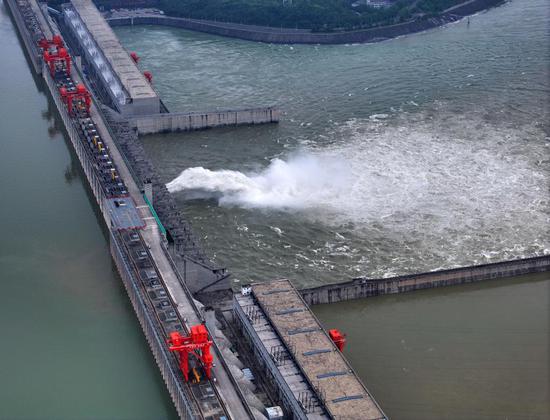China's railway system demonstrated remarkable progress and operational efficiency in the first half of this year, with key performance indicators such as passenger volume and turnover leading the world, according to China State Railway Group.
From January to June, the network witnessed a record 2.096 billion passenger trips, up 18.4 percent year-on-year. Passenger turnover — the number of passengers multiplied by the distance traveled — reached 777.95 billion passenger-kilometers, another record and up 14.1 percent.
The railway network transported a record 332 million metric tons of cargo last month, up 6.1 percent year-on-year, with freight turnover of 266.5 billion ton-kilometers, up 5.3 percent.
China's railway freight volume and turnover metrics rank top globally, surpassing the combined freight amounts of the United States and Russia.
As China's economy continues to grow, the railway network is evolving to meet increasing demand, playing a pivotal role in facilitating trade, commerce and overall economic prosperity.
Cross-border passenger transport via the railway network improved significantly in the first half of the year.
Faster high-speed sleeper trains connecting Beijing and Shanghai with Hong Kong were introduced on June 15. They have reduced travel times between Beijing and Hong Kong to 12.5 hours from over 24 hours, and between Shanghai and Hong Kong to about 11 hours from over 19.5 hours. Both sleeper trains depart in the evening and arrive at their destinations in the morning.
Two new international passenger trains have also been added on the China-Laos Railway, connecting Xishuangbanna in Yunnan province with Luang Prabang, a popular tourist destination in Laos. The international passenger train service between Hohhot in the Inner Mongolia autonomous region and Ulaanbaatar, the capital of Mongolia, has also resumed following its suspension due to the COVID-19 pandemic.
In the first half of the year, the railway department made significant progress, including the opening of new high-speed railways such as the Lanzhou-Wuwei section of the Lanzhou-Zhangye High-Speed Railway. And the Beijing-Guangzhou High-Speed Railway, one of China's most crucial high-speed rail lines, resumed operating at a maximum speed of 350 km per hour along its entire route from June 15.
The accomplishments enabled the railway department to enhance its passenger transport capacity. In the first six months of the year, the national railway system operated an average of 10,256 passenger train services a day, 882 more than in the same period last year, representing growth of 9.4 percent.


















































 京公网安备 11010202009201号
京公网安备 11010202009201号